|
Already the largest of its kind in Europe, here’s how the Signal light festival worked with Christie to bring the spectacle to life

Tom Anstey | Planet Attractions | 02 Apr 2024
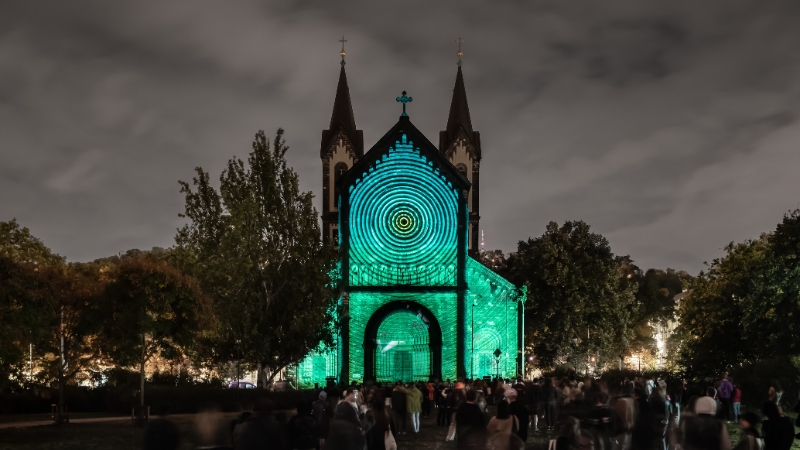
 Japanese creative studio Flightgraf used Christie projectors to map onto the iconic Church of Saints Cyril and Methodius Credit: Tomas Slavik Japanese creative studio Flightgraf used Christie projectors to map onto the iconic Church of Saints Cyril and Methodius Credit: Tomas Slavik
“I’ve had this beautiful task of combining, the old and the new - the historical backdrop of Prague with the forefront of technology, artistry and thinking.”
That’s Martin Pošta, CEO of Signal Festival - an annual event celebrating digital and creative culture that has proved a phenomenal success for Prague.
Drawing more than 4.5 million combined visitors to the Czech capital since its inception in 2013, Signal Festival has become Czechia’s most-visited annual cultural event, with people coming from all over the world to take in the spectacle.
Featuring a programme created by renowned foreign and Czech artists in the area of light design, visual and digital art, AI and conceptual art, the festival is largely free to visit, and most recently featured more than 70 installations created especially for the event.
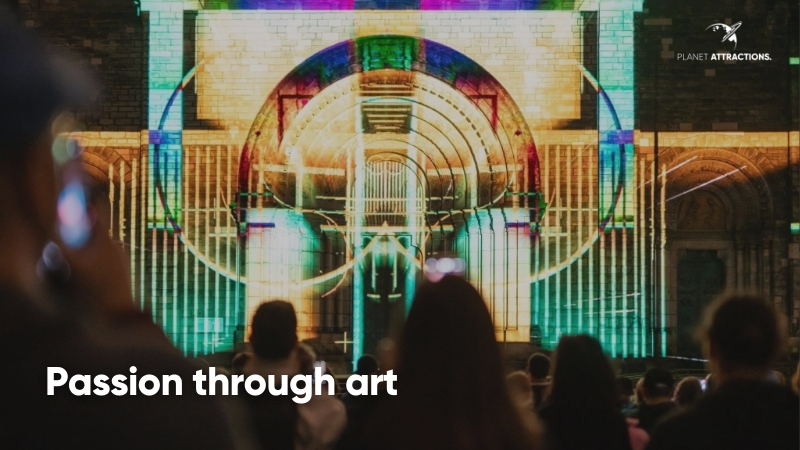
A film producer and director of film festivals for more than 25 years, in 2010 Pošta was presented with the opportunity to create the first major projection and video mapping spectacle to come to Czechia - an event that digitally and visually transformed Prague’s historic clock tower to celebrate the building’s 600th anniversary.
Following this success, Pošta would travel the world exploring light festivals such as Lumiere in Lyon, France, before coming together in 2013 with curator Jan Rolník and artist Amar Mulabegovič from the art group The Macula to form Signal.
“I wanted to figure out what it’s all about and how we can combine our passion for digital and light artistry,” he says. “I needed to see how we could place that passion through art with Prague, which is fairly unique in a sense of the architecture of the city.”
According to Pošta, the inaugural edition of the festival had a “selfish purpose”, as he wanted to see the artists he admired working against the backdrop of historic Prague.
“Honestly, the first edition of the festival was kind of like a checklist of ‘I love these guys and these guys are great’,” he says.
“It was also to bring something unique to Prague because at the time there had been nothing remotely resembling anything like Signal Festival.”
The festival, says Pošta, also served a double purpose in that it allowed residents of the city to “re-explore” its tourist-heavy centre.
“For many people that live in Prague, it's not necessary to go to the city centre because it's tourist stuff,” he explains. “We gave them the purpose to get up from their couches, grab their friends and families and enjoy the city through art. We also allowed them to explore the nooks and crannies of the city that they wouldn't normally go to. It gave them a little bit of a different perspective through art.”
He adds: “With everything that's going on around the world, with small incremental influences, you can modify people's perception of certain stuff in their world. So basically the mission of the festival is to transform society.”
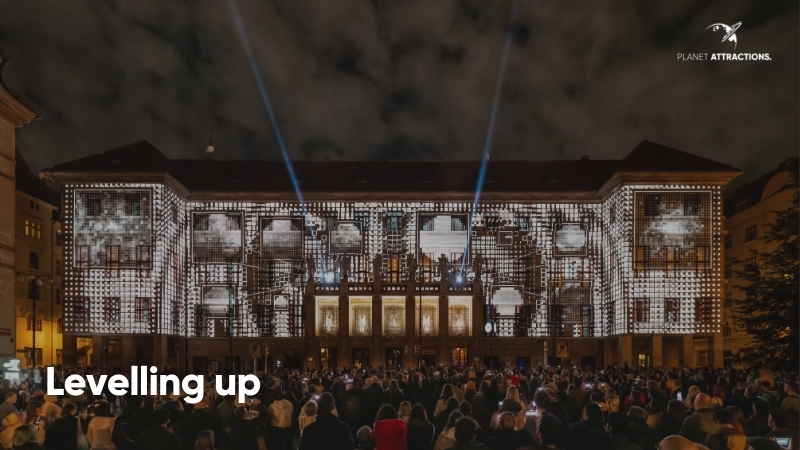
Last year’s edition of Signal Festival proved to be one of the best and most attended yet, and according to Pošta, through the use of advanced projection technology, the event was able to up its game “to a different level”.
AV specialist Christie was utilised for Signal Festival, with its RGB pure laser and 1DLP laser projection technology lighting up a host of projection mapping exhibits during the event, with its Griffyn Series, M 4K RGB Series, and HS Series projectors featured in four special exhibits, illuminating the city with fantastical imagery.
“Christie is one of the companies at the forefront of anything in terms of projection,” says Pošta. “They are great guys to work with and the technology is amazing. Thanks to Christie, we were able to up our game to a different level. We had some more projectors of our own, but with their top-notch products, this most recent edition of the festival was crisp and bright and colourful.”
Through a former colleague at Christie who now runs his own studio in Hungary, an introduction was made between Pošta and the company.
“Historically Signal Festival used one of our competitors but they were quite keen to have Christie support them with the latest edition,” says Joe Graziano, who is director of sales, entertainment, EMEA, for Christie. “We listened to what they wanted to do and we thought it was definitely something we could get on board with.”
Using several preselected buildings around the city, Christie technology was used to create an architectural canvas for the designers and artists to showcase their work.
“Our remit was to provide projection technology for those four areas that they felt was bright enough,” says Graziano.
“They told us what they were looking for in terms of projector brightness. We then went through our portfolio and deemed the necessary technology to be available and took it from there.”
Japanese creative studio Flightgraf used two native 4K, 50,000-lumen Griffyn 4K50-RGB pure laser projectors to map the Church of Saints Cyril and Methodius. The work aimed to highlight the fragile interconnected existence of nature, the environment, and human connection.
Meanwhile, Luminary Glyphs saw artist László Nagy utilise AI to create animations based on the visual qualities of symbols, text, and ASCII characters. For this, Nagy’s animations were projected onto Prague’s Municipal Library using Griffyn 4K50-RGB and 4K UHD, 25,300-lumen M 4K25 RGB pure laser projection.
The third utilisation of Christie technology came in Rafael Lozano-Hemmer’s Thermal Drift. This interactive installation visualised the radiation of visitors’ body temperature by using a thermal camera to detect heat, and a Christie M 4K25 RGB projector, which was used to create the resulting portrait of dispersed particles.
The final Christie element was Signal Playground - an installation by creative studio 3dsense which represented the festival’s first installation designed especially for children. Featuring vibrant and colourful imagery powered by 4K10-HS 11,000-lumen, 1DLP laser projectors, the exhibit encouraged visitors to interact with the space.
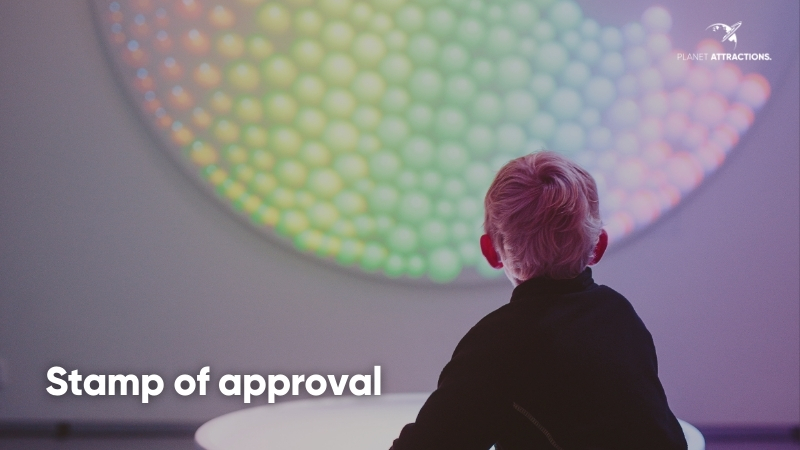
Signal Festival proved to be a veritable success for its 11th edition, with the autumn event rejuvenating public spaces of Prague and reinvigorating the historical art and architecture of the city, not to mention the thousands of people the event - also the biggest of its kind in Europe - drew from all over the world. Not only did it please the public, but also the artists presenting their works.
“We had several discussions and interviews with the artists at the time,” says Graziano. “Certainly one or two of the artists were taken aback by the quality of the projectors and the colours that they were able to achieve, which from our standpoint was great because it kind of validated the level of the technology.
“We were delighted with the results, The video mapping was superb and the colours were fantastic. The artists loved it. Flightgraf were delighted with their content on the Church of Saints Cyril and László Nagy was very, very complimentary about the capabilities of the projectors on his content. I think he realised that for next year if he does the same thing, he can be a lot more creative with his colours and his content because our projectors can handle it.”
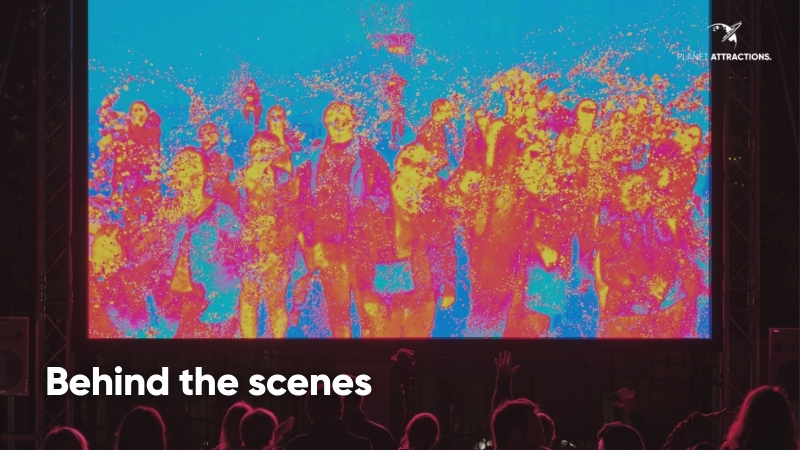
Working with established and historic buildings, of course, does present challenges. For Christie, this meant adapting to the environment around them once on site.
“Behind the scenes, the Christie team worked on the setup, getting the projectors lit up and making sure that they were aligned at the beginning of the events and that they turned on and gave the image,” says Graziano.
“We did have to make a change on Luminary Glyphs at the Municipal Library. The plan would have seen the right-hand projector project onto the right-hand side of the building and the left-hand onto the left-hand side of the building but there was quite a large tree on the right side blocking the projection.
“To get around this, we used the right-hand projector to project onto the left side of the library and vice versa. By doing that, we were able to avoid the tree, and then we manipulated the image within the software so that we were able to warp and blend the images without having the tree in the way of the projection.”
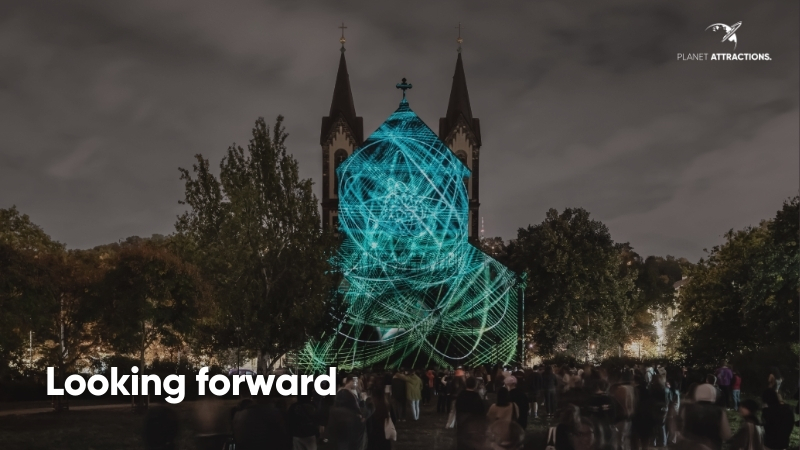
So what’s next for Pošta and Signal Festival? Among the plans is Signal Space - a permanent installation which would act as a digital art gallery in the centre of Prague.
“If everything goes well, we're going to open up our own permanent space in the year to come,” he says. “Slowly I'm passing on the baton to focus on other projects, including a big digital arts and creativity conference to run alongside the upcoming edition of Signal Festival. That’s my focus at the moment.
Beyond Signal, Pošta says plans are in the works to present another similar festival in a new location across the world after being approached by a host city.
“I'm not allowed to talk about it yet because it's very fresh,” he says. “If everything comes through, then it's expanding our operations to another continent. We’ve been in contact with Christie on this to say that we would like to talk to them about working together on that project as well.”
For Christie, they have previously mapped showcases around the world, including recent events such as GLOW Eindhoven in The Netherlands, the Video Mapping Festival in Lille, France, and Schlosslichtspiele Festival in Germany. In 2024, the company will be working on events including the 2024 edition of Signal Festival, which will feature a “landmark of the city” among its locations.
Graziano says: “Signal wants to try and do something bigger, more eye-catching and grander in 2024, so we’re interested to hear their ideas and work with them on that.
“They did everything they could to help this be as successful as it was and judging by the numbers of visitors that came and the reactions and the comments both on the nights and after, I think they've had a very successful show.”
Looking at this year’s edition of Signal Festival and working again with Christie, Pošta says: “It seems, and I hope that, on both sides, we are sincerely excited about working together for this next edition.”
Suppliers
|
|






Supplier Showcase 2025: The biggest attractions projects landing worldwide this year
|